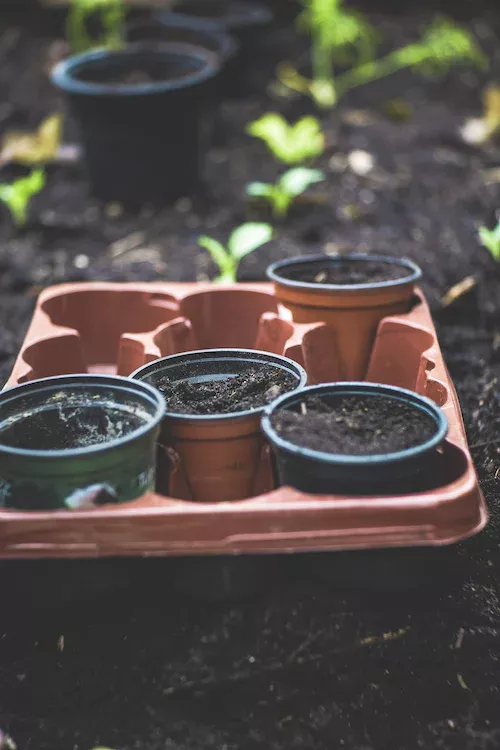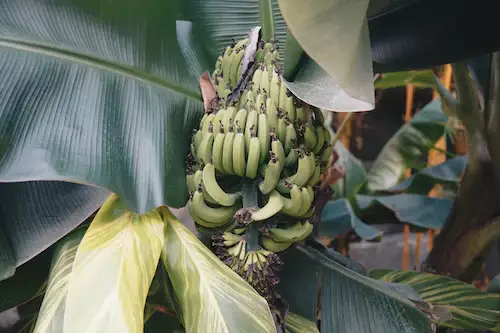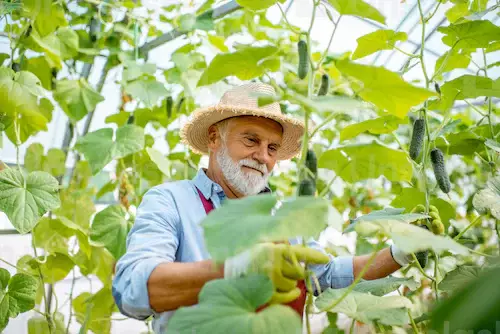13 Cash Crops You Can Grow in Your Backyard (Per Climate)
If you have a green thumb and want to make some extra cash, growing cash crops in your backyard is a great way to do it. With careful planning, you can make sure your cash crops thrive and bring you a nice return on your investment.
The cash crops you can grow in your backyard in a tropical climate are pineapple, mango, banana, and avocado; in a dry climate, tomatoes, squash, and peppers; in a temperate climate, carrots and potatoes; in a continental climate, cucumbers and garlic; and in a polar climate, kale and Brussels sprouts.
Maximize your yields and make a profit with these cash crops with proper planning and care. Gain the right knowledge for your backyard to turn into a profitable farm. Start by reading below.
Summary
- You can plant pineapples and mangoes during the tropical season, while tomatoes and peppers are best for dry climates.
- Carrots and tomatoes are the best crops during the temperate season, while garlic and cucumbers can survive in continental climates.
- Make the most of your backyard during polar climates by planting kale and Brussels sprouts.

On this page:
Cash Crops to Plant in Your Backyard
If you’re looking for ideas on which cash crops to grow in your background for different seasons in a year, worry no more. Here’s a list of crops you can choose from:
Tropical Climate Cash Crops
For the tropical season, here are the four cash crops that are best planted in your backyard.
1. Pineapple
Planting a pineapple in your backyard in a tropical climate can be a great way to enjoy delicious, sweet fruit all summer long. Pineapples are a great addition to any garden and are relatively easy to grow in a tropical climate. With some basic care, you can enjoy a beautiful pineapple plant in your backyard all season long.
- Purchase a fresh pineapple from your local grocery store or farmer’s market.
- Once you have a pineapple, cut off the top and remove the leaves.
- Use a sharp knife to cut off the tough outer skin, leaving the soft inner flesh.
- Next, you’ll need to plant the pineapple. Find a sunny spot in your backyard and dig a hole about eight inches deep and eight inches wide.
- Add some compost or other organic matter to the hole to give the pineapple a good start.
- Place the pineapple in the hole and cover it with soil.
- Finally, water your pineapple and make sure it gets plenty of sunlight.
Pineapples need at least four hours of direct sunlight a day, so make sure the spot you choose is sunny. Water your pineapple every couple of days or whenever the soil feels dry.
2. Mango
Planting mangoes in your backyard in a tropical climate is a great idea. Mangos are well-suited to tropical climates and require very little maintenance. With proper care, mango trees can grow up to 30 feet tall and live for decades. You will want to make sure you have a sunny spot in your backyard with well-drained soil.
Mangos need plenty of water and fertilizer, so you will want to make sure you can provide them with the necessary nutrients. With a little bit of patience and care, you can enjoy a bounty of delicious, juicy mangoes from your backyard.
3. Banana
Bananas are one of the most popular fruits in the world, and they can be grown almost anywhere in a tropical climate. Not only do they provide delicious, nutritious fruit, but they also provide a beautiful, lush landscape for your backyard. Bananas are relatively low-maintenance, needing only some fertilizer, water, and occasional pruning. With the right care and attention, you can enjoy a bountiful harvest of bananas in no time.

4. Avocado
Planting avocados in your backyard in a tropical climate can be a great way to enjoy fresh and delicious avocados year-round. To get started, you'll need to purchase avocado trees that are suitable for your local climate and have the right soil conditions for optimal growth.
After planting, you'll need to make sure to water the trees regularly and provide adequate nutrients for healthy growth. With proper care and maintenance, you can expect to harvest fresh avocados in 2–3 years, depending on the variety.
Dry Climate Cash Crops
During the dry season, these three crops can survive.
5. Tomatoes
Planting tomatoes in your backyard in a dry climate can be a tricky endeavor, but with the right techniques and methods, it can be a rewarding experience. To start, make sure the soil is well-drained and amended with compost to help retain moisture.
For best results, provide the plants with a deep, regular watering schedule and mulch the soil around the plants to help keep moisture in the soil. When the temperatures get too hot, consider providing shade to the plants, either with shade cloth or by planting taller crops around the tomatoes to create natural shade.
6. Squash
Firstly, it is important to make sure the soil is well-drained and that you are providing adequate irrigation during the dry months. Watering should be done consistently and deeply, as squash have shallow root systems that require frequent, deep watering.
Additionally, it is important to mulch around the base of the plants to help retain moisture and keep the soil cool. Lastly, it is important to make sure the squash is planted in the right location, preferably in an area that gets plenty of sun and is protected from strong winds.
7. Peppers
Start by choosing a drought-tolerant variety. Make sure the soil is well-draining and amended with compost. Plant the peppers in a sunny spot and water deeply once or twice a week.
If the weather is particularly dry, make sure to water more frequently to ensure the soil remains moist but not soggy. Mulch around the plants to help conserve moisture. Keep an eye on the peppers for signs of wilting or stress, and adjust your watering accordingly.
Temperate Climate Cash Crops
These are the two best cash crops that can be planted in your backyard during the temperate climate.
8. Carrots
Planting carrots in your backyard in a temperate climate can be a great way to enjoy fresh, homegrown produce. Carrots are easy to grow and thrive in a variety of soil types. When planting carrots, it's important to keep the soil evenly moist and make sure it's well-drained.
You'll want to sow your carrot seeds in the late spring or early summer and give them plenty of sun. Make sure to thin the plants as they germinate, to allow them adequate room to grow. Carrots are ideal for a home garden, and with regular watering and weeding, you'll be able to enjoy a bountiful crop of delicious carrots.
9. Potatoes
All you need to do is find a spot in the backyard that gets at least 6–8 hours of direct sunlight and dig a trench around 8 inches deep. Then add some fertilizer and compost to the soil and place your seed potatoes in the trench, making sure to leave 12–15 inches between them.
Make sure to cover the potatoes with a few inches of soil and water them regularly to keep the soil moist. As your potatoes grow, you may need to mound up the surrounding soil to keep them from being exposed to too much sun.
Continental Climate Cash Crops
Make the most of your background in the continental climate by planting these two best cash crops.
10. Cucumbers
Cucumbers are a great cash crop to be planted in the backyard in a continental climate. They are relatively easy to grow and can be harvested in as little as 45 days. Cucumbers thrive in warm weather, so they are ideal for continental climates. They can be sold either fresh or pickled.

11. Garlic
Garlic is a hardy plant that is both drought and frost-tolerant, making it an ideal choice for cooler climates. It is planted in the fall and harvested in the summer, allowing for a long growing season. Garlic can be used in a variety of dishes or sold at farmers’ markets, making it a very profitable crop to grow.
Polar Climate Cash Crops
Plant these two cash crops that can survive in your backyard in a polar climate.
12. Kale
Kale is a resilient, cold-hardy plant that can be grown in the garden in a polar climate. It has high nutritional value and is a great source of vitamins A and C, calcium, iron, and fiber. Kale is a great addition to any garden, as it can be planted in early spring and harvested in late summer and early fall.
13. Brussels Sprouts
Brussels sprouts are another cold-hardy vegetable that is well suited for growing in a polar climate. They are a good source of fiber, potassium, and vitamin C, and are a tasty addition to any meal. Brussels sprouts can be planted in the early spring and harvested in the late fall or winter.
